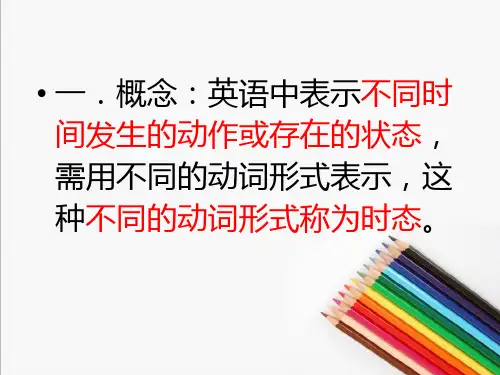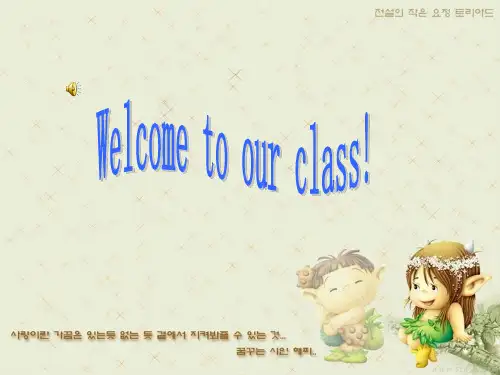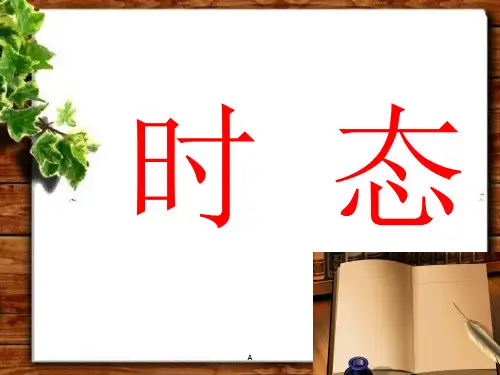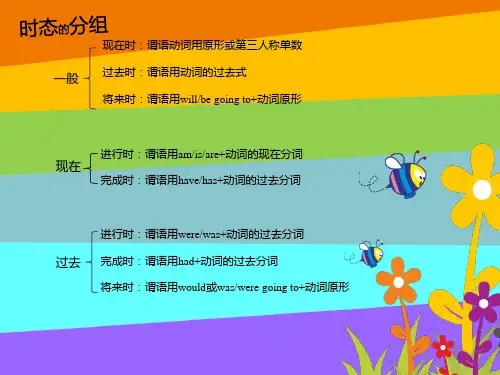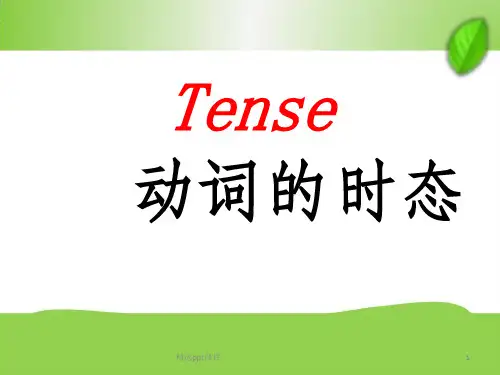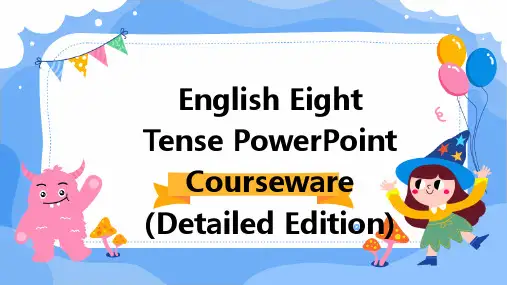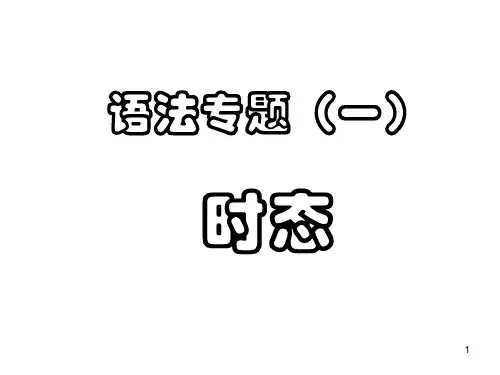一、一般现在时:
• 概念:经常、反复发生的动 作 或行为及现在的某种状况。 • 时间状语: always, usually, often, sometimes, every week (day, year, month…), once a week, on Sundays。
•基本结构:①be动词; ②行为动词。 •否定形式:①am/is/are + not; ②此时态的谓语动 词若为行为动词,则在其前加 don't,如主语为第三人称单数, 则用doesn't,同时还原行为动词。
一般现在时与现在 进行时的转换:
在一般现在时中,at加上名 词表示“处于某种状 态”,如at work(在工 作), at school(上学、 上课)等。此短语可与 进行时态转换。
• 一般疑问句: ①把be动词放于句首; ②用助动词do提问,如 主语为第三人称单数,则 用does,同时,还原行为 动词。
二、一般过去时:
• 概念:过去某个时间里发生的动 作或状态;过去习惯性、经常性 的动作、行为。 • 时间状语:ago, yesterday, the day before yesterday, last week (year, night, month…), in 1989, just now, at the age of 5, one day, long long ago, once upon a time, etc.
八、过去将来时:
• 概念:
立足于过去某一时刻,从过去 看将来,常用于宾语从句中。
• 时间状语:
the next day (morning, year…),the following month (week…),etc.
• 基本结构: ①was/were/going to + do; ②would/should + do. • 否定形式: ①was/were/not + going to + do; ②would/should + not + do. • 一般疑问句: ①was或were放于句首; ②would/should 提到句首。

